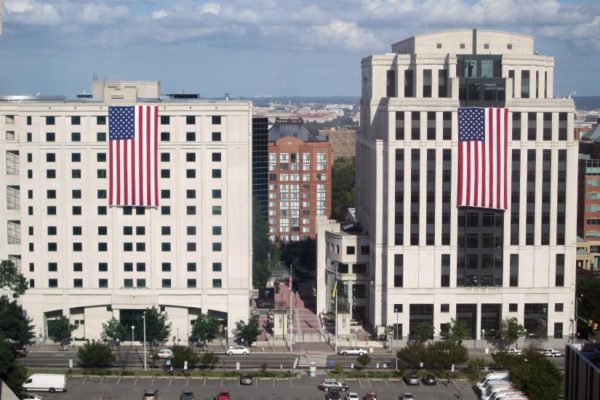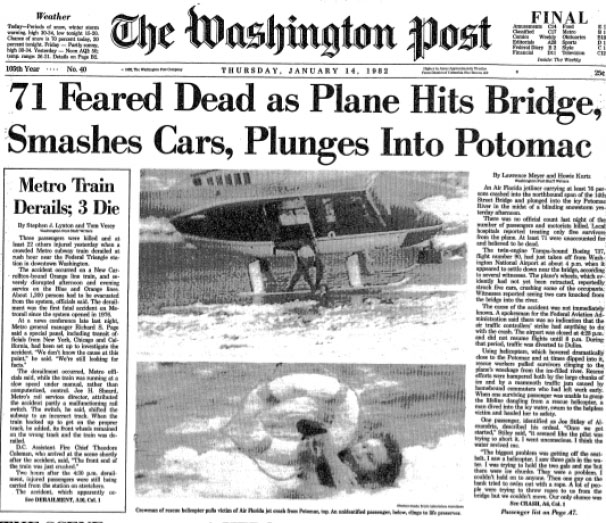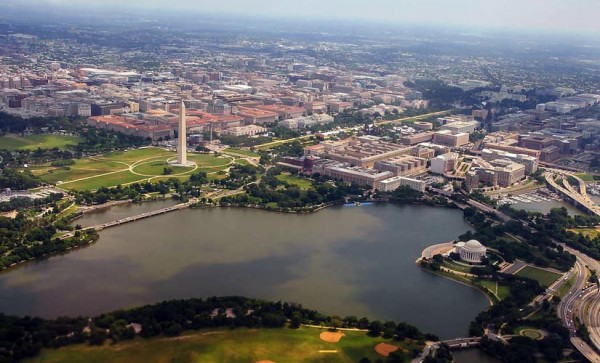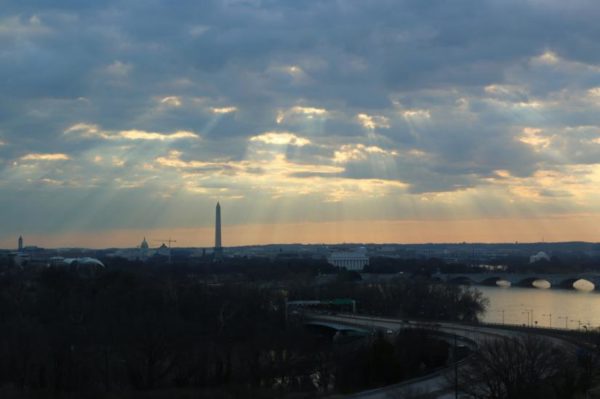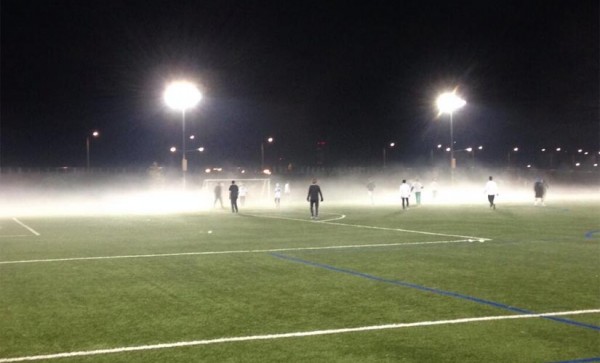 The Federal Aviation Administration is considering a policy change that would lower the maximum allowable building heights near airports, a regulation that could severely hamper future development in Arlington’s urban centers of Rosslyn and Crystal City.
The Federal Aviation Administration is considering a policy change that would lower the maximum allowable building heights near airports, a regulation that could severely hamper future development in Arlington’s urban centers of Rosslyn and Crystal City.
On April 28, the FAA formally announced it was considering changing the regulations regarding “One Engine Inoperative” safety procedures, the rules dictating precautions that should be taken in case one engine fails on a plane during takeoff.
This afternoon, Rep. Jim Moran (D-Va.) introduced a bill that would require the FAA to put the policy change through “standard rulemaking procedure,” including a cost-benefit analysis by the federal Office of Management and Budget and studies by other agencies before taking effect. The FAA advertised the new rule as a “proposed policy,” which would circumvent the rulemaking procedure, Moran told ARLnow.com.
“The airlines and the airports authority are acting out of greed,” Moran said. “It’s self-centered on their part. It’s disappointing and it should be stopped in my view. I’m just asking that they go through the normal, standard rule-making procedure where you look at the real-world impact, but they don’t want to consider what the economic impact would be in surrounding communities because their stovepipe attitude is they exist for the benefit of the airlines.”
Moran said the regulations are unnecessary as it stands because, unless commercial planes are overloaded, they can ascend well enough to clear the current maximum height restrictions.
“There are millions of flights that go in and out of our airports and it never happens,” Moran, referencing the threat of a One Engine Inoperative situation that leads to a crash into a building. “The reason for this rule change is that they want to make more money by overloading the planes with cargo, passengers and fuel… They need to exercise some restraint so that if one engine was to become inoperable they could continue climbing.”
According to Moran, almost 170 structures in Virginia, largely in Crystal City and Rosslyn, would be impacted by the regulation. While the buildings that are currently built would not be affected, any redevelopment would have to come in the form of shorter buildings, meaning the property values of current buildings could plummet.
It’s unclear at this point what the new maximum height for the buildings would be, according to Moran’s office, but it’s likely buildings like 1812 N. Moore Street and the under-construction Central Place would exceed it. Crystal City especially could be hurt, Moran said, because of the vacant buildings that are in line for redevelopment after the military’s Base Realignment and Closure Act rendered many of them vacant.
“[The policy] would stop any high-rise redevelopment,” Moran said. “If you’re going to make the public investment in Metro, you’ve got to have the high-rise, high-density development around it to pay for it. This would prohibit that.”
Moran’s co-sponsors on the bill are Rep. Steve Cohen (D-Tenn.), Frederica Wilson (D-Fla.), Matt Salmon (R-Ariz.), David Schweikert (R-Ariz.). The bipartisan-supported bill could slow the regulatory process significantly if it passes, Moran said. The FAA advertisement solicits public comment for 60 days, after which it could proceed to implement it. If the bill passes, the process would likely take more than a year.
“I think we’ve got a shot at it,” Moran said. “Frankly, I think the real impact of the bill is going to be to alert FAA that there is a lot of congressional resistance to what they want, and they’ll take it into their own hands and go through the normal procedure.”
File photo


